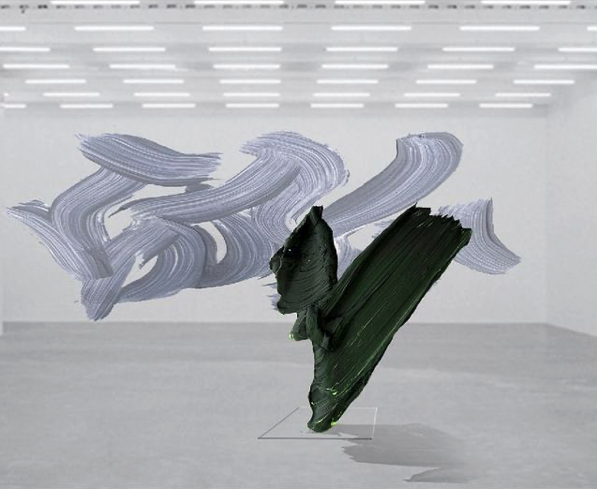Space: Traditional Western painting from the time of Giotto until Courbet created the illusion of space using Filippo Brunelleschi’s ideas of perspective. This type of space offered the viewer the opportunity to enter the illusory, albeit fictional picture space to experience the art. I intend for my works to exist in the same space as the viewer; to interact directly as an object with the environment and the viewer.. The forms of the work are in dialogue with the wall, the room, and the viewer. In Germany in 1808 Caspar David Friedrich brilliantly synthesized and amalgamated space in his painting Der Mönch am Meer and later with Der Wanderer über dem Nebelmeer by inviting the viewer to place themselves into the painting through the use of a Rückenfigur. Barnett Newman understood this very well when he painted his masterwork Vir Heroicus Sublimis in 1951. Through the use of free-standing paint-sculptures my work is in dialogue with the history of the use of space, the history of painting, and with these paintings in particular.
Time: In photography the shutter speed of 1/1600th second is typical to freeze action and capture an instant in time. While photography captures the image of an instant in time, a painting captures an event in time. Rather than producing an image of a gesture or mark, my paintings are the result of an event. The event happens over an extended period of time. By inviting the viewer into the painting, to become a collaborator or participant rather than a casual viewer the works offer a multifaceted and complex experience similar to the experience one might have wandering through a cathedral rather than the usual glance, glimpse, or cursory look. What I have in mind is a different kind of experience: not just glancing, but looking, staring, gazing, sitting or standing transfixed: forgetting, temporarily, the errands you have to run, or the meeting you’re late for, and thinking, living, only inside the work. Forgetting time, the past, the future, only existing in the present.
Falling in love with an artwork, finding that you somehow need it, wanting to return to it, wanting to keep it in your life. This kind of experience requires time and a willingness to be in dialogue with the work; to have an ongoing relationship with it. While the painting itself may be unchanging, the viewer may find they change quite a bit over time.
